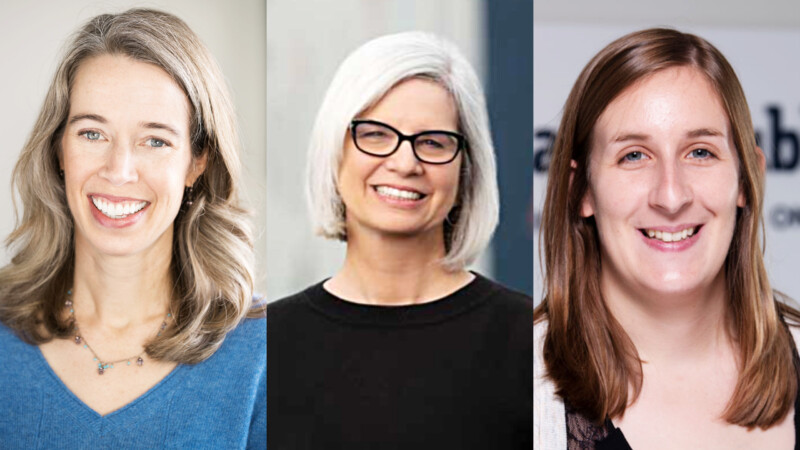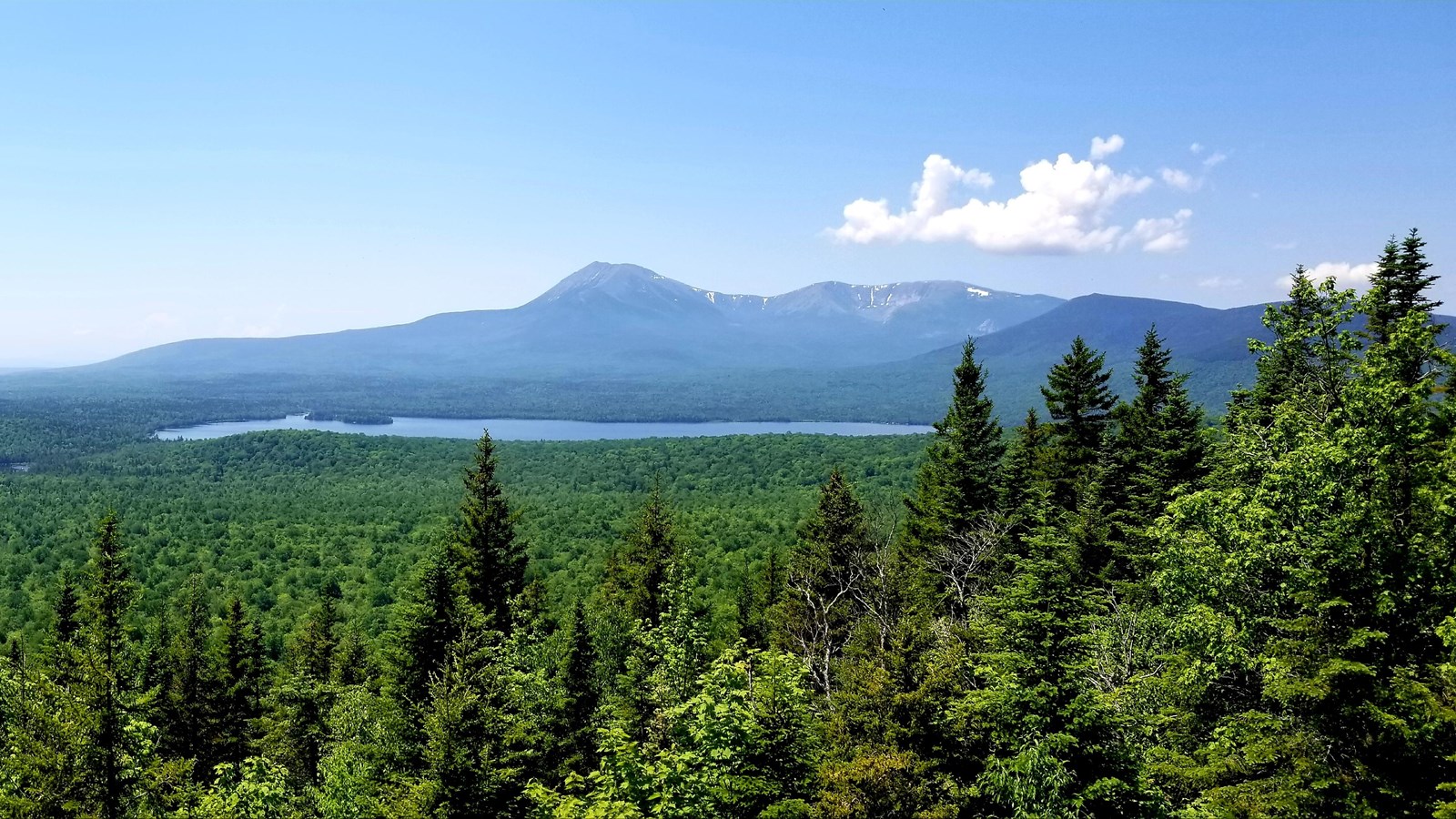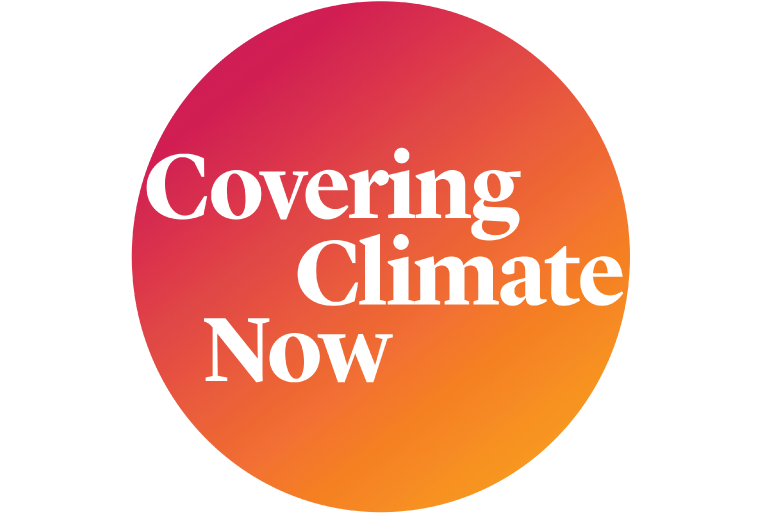EACH MONTH, Covering Climate Now speaks with different journalists about their experiences on the climate beat and their ideas for pushing our craft forward. This week, we spoke with three journalists from Maine Public: deputy news director Susan Sharon, news producer Patty Wight, and Bangor correspondent Nicole Ogrysko. Along with the rest of the Maine Public team, the three have been hard at work on “Climate Driven,” a special year-plus-long series examining how climate change is reshaping Mainers’ lives and the climate solutions they’re putting to the test—all of which, crucially, has been supported by the station’s very own electric vehicle. Sharon, Wight, and Ogrysko share lessons from the road, including about working collaboratively across the newsroom, identifying climate stories in every county in the state, and making climate news relevant and practical for audiences. The conversation, with CCNow deputy director Andrew McCormick, has been edited for length and clarity. Check out Maine Public’s full “Climate Driven” series here, and follow Sharon, Wight, and Ogrysko on Twitter.

From left to right, Patty Wight, Susan Sharon, and Nicole Ogrysko. Photos courtesy of Maine Public.
Can you introduce “Climate Driven” and describe some of the brainstorming that led to this lengthy, county-hopping project?
Susan Sharon: A few years back, we were traveling around Maine, asking audiences what news they wanted to see covered. We called it the “Tell Me More Tour,” and the idea was to hear directly from people about the issues that were important to them and their communities. Something we kept hearing was: “We want more climate coverage. We want to hear more about climate change, and we want to learn more about solutions.”
This wasn’t a surprise, exactly—Maine is known for having an environmental ethic—but it prompted our newsroom to delve into climate in a big way.
After that, in 2021, I happened to be judging entries for the Society of Environmental Journalists Awards, and I came across the CNN special “The Road to Change: America’s Climate Crisis” with Bill Weir. I found it totally riveting. It was this great road trip around America. It had characters; it had a sense of urgency. It made you feel energized—you could really feel the need to act. I thought, “Wow, maybe this road trip approach to climate is what we should do in Maine.”
We launched “Climate Driven” several months later, in November 2021, with a story about what negotiations at the UN’s cop26 summit in Glasgow could mean for Maine. Since then, we’ve told climate stories from eleven of the state’s sixteen counties—stories from the other five are coming soon—with involvement by nearly everyone in the newsroom. We originally expected the project to run a year, but now the plan is to wrap up this April, around Earth Day.
Patty Wight: Given the subject matter, and because we were going to be traveling so much, we had the idea to use an electric vehicle. So we leased a white Nissan Leaf, which we named Pearl. We’ve reported as many stories as possible using Pearl, and in many ways the car has become part of the “Climate Driven” story. We’ve all learned a lot about what it’s like to drive an EV and how doable it is—more doable than some think, though you have to plan differently.
Transportation is a top source of greenhouse gas emissions in Maine, so getting more EVs on the road will be an important part of our climate response. But Maine is a big, rural state where there isn’t yet a great charging network. And when we talk to people about EVs, there’s a lot of understandable “range anxiety.” Susan was out in the car once, in fact, and wound up needing to cancel her reporting plan and turn back; it was cold out, which can deplete EV batteries, and a detour had added too many miles to her trip. So, by including the car in our stories, we’ve been able to show both the opportunity of EVs and some of the obstacles that Maine still needs to overcome. And audiences seem to love it.
Nicole Ogrysko: In fact, I was out reporting on someone having a heat pump installed, just getting the interview on tape and getting some sound. Turns out the guy was a Maine Public fan and was disappointed when I didn’t drive up in Pearl. Which is to say, this was a listener who knew about the car and was excited about the “Climate Driven” project.
On the “Climate Driven” landing page, you write that “we, all of us” are called to do something about climate change. So it seems appropriate that so much of your team has been involved in the project. Was it always the idea to have everyone contribute?
Susan: We wanted to involve as many of our journalists as possible to demonstrate our newsroom’s commitment to climate in a big way and also to help everyone on our news team raise their own bar for reporting on climate change. Apart from only one reporter, who has a climate story coming out soon, everyone on our team has reported stories, even our editors. We also felt this approach would result in a stronger, more diverse catalogue of stories. It’s just better when more people are coming to the table with pitches.
How did your team identify the stories you wanted to pursue?
Susan: There’s a lot here to tackle on the climate beat. Maine is such a large and diverse state, geographically. We’ve got this incredible and enormous coastline, the largest continuous forest east of the Mississippi River, and iconic crops, like blueberries and potatoes. We’re seeing the effects of climate change on all these fronts.
So, for starters, knowing that we were going to take a county-by-county approach, we thought through: What are the signature things from each county that we can look at through a climate lens? We knew we wanted to hit western Maine, which is heavily mountainous, for example, in the wintertime, when it would be ski season. [Climate change has meant fewer snow days on popular mountains.] In eastern Maine, Nicole did a story about how blueberry farmers are working to both mitigate and adapt to climate change.
That said, we also wanted to be flexible. There are plenty of stories—policy stories, solutions stories, stories about how people are living—that are bigger than any one county or region; the county approach has helped us root those stories in a sense of place.
Nicole: Maine’s governor [Janet Mills, a Democrat] has a climate change plan, called “Maine Won’t Wait,” which has also informed some of the conversations we’re having with people around the state and the stories we’re looking into.
For example, the state has a goal of installing one hundred thousand new heat pumps by 2025. [Heat pumps are an energy-efficient alternative to other means of heating and cooling homes, such as furnaces and air-conditioners.] The government is on track to meet that goal, but we wanted to investigate whether heat pumps were being installed in some of the more rural and economically disadvantaged counties. So, last May, I traveled to Piscataquis County, in the northern part of the state, and found that a lot of people are skeptical about heat pump installation, even with government support on offer. In addition to there being somewhat complex eligibility requirements, people worry that installing a heat pump will lead to higher and ultimately unaffordable electricity bills. [Some low-income Mainers benefit from a public assistance program that subsidizes their homes’ primary, sometimes nonelectric, heating source; Maine’s housing stock is among the country’s oldest, and many people still heat using oil and propane.] So that’s a case, like Susan’s referring to, where we took a broad policy issue and rooted it in a specific place to help audiences understand that policy and some of the challenges to implementing it.
At CCNow, we hear from some newsrooms that “climate confidence” is a challenge for reporters not explicitly assigned to the climate beat, given the various technical aspects of climate change and the magnitude of the story. Was this a concern at all for your team?
Susan: Honestly, I don’t think so. I don’t think any of us feel like we’re experts on climate change. Our news director, Mark Simpson, is very into having our newsroom work collaboratively on projects—taking various topics, doing deep dives, and involving a lot of people in the newsroom. So I think there’s precedent for our collaboration on “Climate Driven.” In 2019, in fact, when Covering Climate Now launched and had that first joint coverage week, with only about five weeks to get ready, our team wanted to take it on. We published a full week of climate coverage, and I was proud to see how many on our team wanted to participate.
Nicole: I didn’t have any experience covering climate change before “Climate Driven.” But as I’ve worked on some of these stories, I’ve found that people are very patient and willing to talk me through things. We start at the beginning and get a little bit more technical as we go.
I did a story about a house being 3D-printed by the University of Maine, entirely from bio-based materials—residue from sawmills, mostly—and that could have been very technical. But the team in that lab—they knew how to explain what they were doing to a layperson. Then I, as the reporter, knew I needed to clearly identify what the story was really about, which at the end of the day was the affordable-housing shortage and the need for climate-friendly housing in particular.
Patty: What’s been super important for me when it comes to climate confidence is the support of editors. I first started covering climate change because Susan and other editors had said they wanted us to do climate stories for that CCNow joint week. I specialize in health coverage, so they encouraged me to look at stories familiar to me from a climate angle—ticks and toxic algal blooms, both of which are getting worse amid climate change, for instance. So, for reporters who might feel hesitant, knowing that an editor cares and is going to work with you to get the climate story right is huge.
Traveling all over the state, did you ever run into climate denial or get any pushback on the reporting you were doing?
Susan: Maine is an interesting place. The image people have outside of our state is all about the coast and Portland, which is a great food town. They forget, I think, that Maine is largely poor and rural; in reality, southern Maine and northern Maine are two very different places. I worked on a story recently about climate skepticism in Washington County, in the east. And you know, people can see with their own eyes what’s happening. The Gulf of Maine is one of the fastest-warming bodies of water on the planet, and that has major implications for fish and the fishing industry. Some people in the area might not be worried about climate change per se, but they’re definitely worried about their livelihoods. They’re worried about how they’re going to afford gas and groceries. They’re worried about how they’re going to heat their homes.
For that story I talked with a social scientist from the University of Maine who’d done research on climate communication in the area and found that there was actually a lot of room for common ground with people, if you didn’t start right off by talking explicitly about climate change. It’s more effective, she said, if you show people solutions to practical issues they’re facing because of it—if you show them that there are resources and support for dealing with issues like sea-level rise and infrastructure development. I ended the piece with a line from a lobsterman that sort of pivoted off what the professor said: he didn’t want to hear about solar and wind energy, but he was very open to climate policies that would protect fish and support fishermen.
Nicole: Similarly, when I was talking to a wild-blueberry grower, his attitude was sort of like, “Okay, climate change, whatever.” But he was very willing to talk about how his growing season was changing, how temperatures are getting warmer, and how there’ve been multiple droughts within just a few years. So, in a lot of stories we’ve done, I think we’ve tried to focus on those tangible impacts on people’s livelihoods and their families.
It sounds like you’ve taken both a practical approach and a solutions-focused approach. Are there “Climate Driven” stories along these lines that stand out to you or that you’ve found especially interesting to work on?
Susan: A recent story by our senior editor, Keith Shortall, about a “passive house”—a house that requires very little energy to heat and cool—went totally nuts on social media. The Passivhaus concept is not new, but I think the story had so much appeal not only because it was a climate solutions story but because people out there are looking for ways to save money, especially around energy and housing. The house that Keith reported on looks like something that you might be able to do yourself.
In September, separately, I did a story about the potential of Maine’s forests to store carbon, which could have climate and environmental benefits for the entire region of New England. That was intriguing to think about: How can we help not just Maine but our neighbors if we compensate landowners for practicing better forestry practices—changing how they grow and cut down trees to boost the forests’s carbon storage capacity—whereas right now the only thing we pay them for is harvesting the wood?
Nicole: In December, I enjoyed working on a story about a group of people who were convening just to talk about climate change. It was billed as an “ambassadors program,” meaning this group was teaching people the basics of climate change, so that they could then go talk to their friends about it. What surprised me was the makeup of the group: I expected just younger people, who statistically worry more about climate change, but, in fact, the group ranged from college students to retirees, from a variety of different backgrounds and career fields. Across the board, they said they felt alarmed by climate change but didn’t know what to do about it. And out of that came a substantive and broader conversation about mental health and much more.
What advice would you share with other newsrooms wanting to tackle climate change in a similarly ambitious way?
Patty: When you think about “Maine and climate change,” the story can feel so big and overwhelming. The fact that we had this organizing principle of going county by county was really helpful for breaking that big story down.
Susan: I do hear from other climate reporters, even ones with a lot of experience, that they sometimes don’t know where to start; they feel there are too many climate stories to tackle. The county approach forced us to have some discipline, and then our struggle became a different one: to define the best stories to tell in each county and work to the highest and best use of our time. I can imagine newsrooms in lots of different situations trying something like this, even in states without the sort of geographic diversity that Maine has. You could tackle the story using towns and cities, for example. Whatever it is, find the thing that your newsroom is going to be enthusiastic to cover and lose the fear. Just get started, because it’s better to attempt to cover climate change and struggle than to be paralyzed and do nothing at all.




